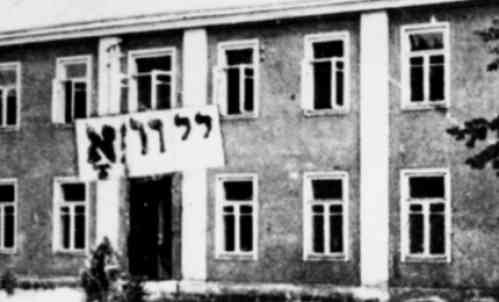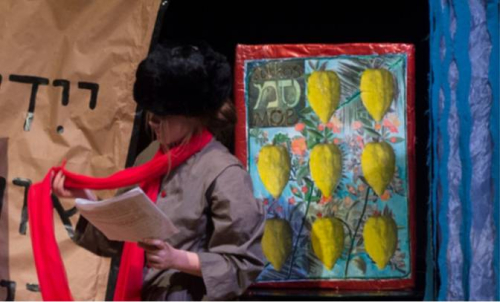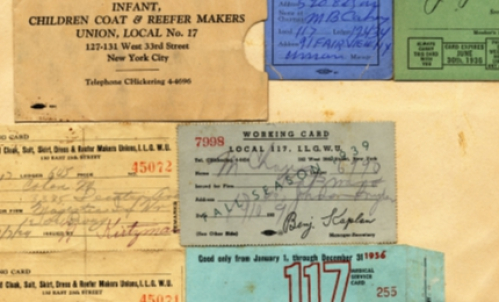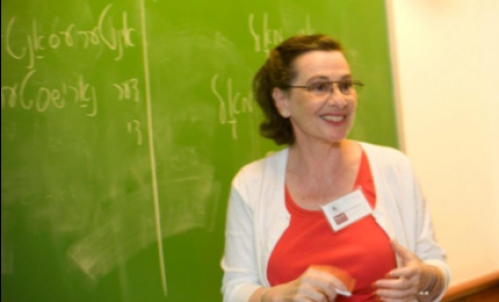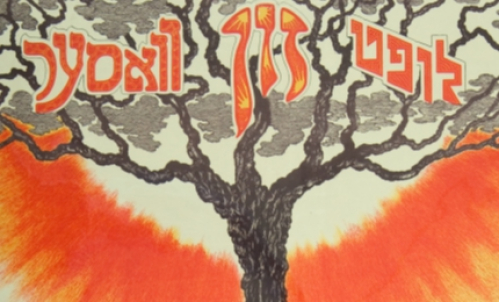2017 Winter Program
Course List · January 3 – March 2, 2017
Reading Isaac Babel's Red Cavalry
Instructor: Jonathan Brent
This course will be an intensive, close reading of Isaac Babel’s masterpiece, Red Cavalry (1926). Written in the aftermath of the 1917 Revolution and the failed 1920 Polish war, in which Babel took part, Red Cavalry is one of the great works of Jewish-Russian modernist literature. It recounts many of Babel’s own experiences during the 1920 campaign but goes far beyond simple reportage or realistic portrayal to represent the profound spiritual, moral and social disruptions of the modern period. We will pay attention specifically to the literary elements of Babel’s unique style and explore how this style contributes to the development of his themes of war, the Revolution, the fate of the Jewish people, and the narrator’s own tragically conflicted inner drama of identity, conscience, and commitment.
At the Edge of the Abyss: Jewish Intellectual Responses to Nazism, 1933-1940
Instructor: Josh Karlip
This course will explore Jewish intellectual responses to Nazism from the rise of Hitler in 1933 to the first year of World War Two in 1939-1940. Recent historiography has moved beyond describing the physical destruction of European Jewry during the Holocaust to exploring its deep crisis in the years immediately prior to the war’s outbreak. This course will, to quote one historian, seek to recover “the catastrophe before the Catastrophe.”
First, the course will survey the political plight of European Jewry on the eve of and following Hitler’s rise to power. Then, we will analyze different Jewish intellectual reactions to the Nazi repeal of Jewish emancipation and the spread of virulent anti-Semitism throughout Europe. Among the topics to be discussed are as follows: the crisis in faith in Enlightenment and modern civilization, the debate amongst Jewish intellectuals about the legacy of Jewish emancipation, differing rabbinic responses in both Central and Eastern Europe, the “return to the ghetto” debate in the Yiddish press, and the 1939-1940 Yiddish journal of ideological revision Oyfn Sheydveg (At the Crossroads).
Yiddish Culture in Wartime, 1939-1945
Instructor: Samuel Kassow
In the ghettos of German occupied Poland, paper and pen became important weapons of cultural and spiritual resistance. Underground archives in Warsaw, Lodz, Vilna and elsewhere gathered documents and hid them in buried time capsules. These time capsules included diaries and essays, fiction and poetry, reportage and religious writings. Historians like Emanuel Ringelblum in Warsaw worked night and day to make sure that even if they did not live to see the liberation, Jews would at least know that posterity would remember them on the basis of Jewish sources and not German documents.
This course will examine what those time capsules contained. It will focus on writings from the ghettos of pre-war Poland and Lithuania and, in keeping with the purposes of YIVO, on materials written originally in Yiddish. Authors will include Avrom Sutzkever, Emanuel Ringelblum, Peretz Opoczynski, Joseph Zelkowicz, Yitshak Katznelson, Rachel Auerbach, the Piaseczner Rebbe and several others. The course will also study a major pillar of wartime culture, ghetto songs.
This course will be conducted in English. No knowledge of Yiddish is required.
Jewish Humor: From Yiddish Folktales to Curb Your Enthusiasm
Instructor: Eddy Portnoy
Known historically as the “People of the Book,” the Jews are perhaps better known in the modern era as the “People of the Joke.” With a history of popular humor production that dates from the 19th century onward, Jewish comedy writers contributed heavily to the entertainment world in a variety of locales. The comedy industry, particularly in the United States, would come to be dominated by Jewish writers, whose cultural backgrounds frequently played a role in their comedic products. This course will survey the development of Jewish humor as a cultural phenomenon during the 19th and 20th centuries, focusing mainly on the history of American Jewish comedic output, but also delving into Jewish material from Eastern Europe, the USSR, and Israel.
By analyzing the development of Jewish humor, we will be able to gain insight into the variety of Jewish cultures and the ways in which they are affected by historical valences, as well as issues such as acculturation, assimilation, and methods employed in matters of cultural maintenance.
Modern Yiddish Theater
Instructor: Alyssa Quint
An abiding source of modern Yiddish creativity can be found in its encounters with the cultures it flourished alongside. All Yiddish writers of note were, of course, fluent in other languages, masters of other literatures. The awareness of cross-cultural movements, of translation and adaptation, for instance, are particularly palpable in the Yiddish theater. Since the inception of the Yiddish theater in the 1870s, its actors and playwrights moved between Yiddish and Polish or Russian in Eastern Europe, and, in America, between Yiddish and English.
The Yiddish theater thrived on border-crossings of genre—from book to stage, for instance—and, by the 1920s, between theater and film. What is the significance of the wedding jester in The Sorceress, a play Avraham Goldfaden adapted from the Romanian theater, or the meaning of the ambivalent performer in the film The Vilna Town Cantor based on Mark Arnshteyn’s play of the same name? How did the cross-cultural stage experience (Hebrew, Yiddish, Polish etc.) of The Dybbuk shape its meaning?
This course explores border-crossings of genre and language as essential to the cultivation and vigor of any modern theatrical culture. We will focus, however, on border-crossings as an essential ingredient in the coalescence of a distinctive Yiddish theater vernacular.
What Kind of Jew Was Spinoza?
Instructor: Steven Smith
It is one of the great paradoxes of modern history that one of the most important Jewish philosophers who ever lived – indeed, the man who had perhaps the greatest influence on modern Judaism – is the one Jewish philosopher to have been excommunicated.
Baruch Spinoza (1632-77) occupies a central place in the development of modern Jewish history. He exemplified the first modern Jew, coming to typify a distinctly modern form of Jewish identity. Yet even today, over three hundred years after his death, the question remains: “What kind of Jew was Spinoza?” What was the relation between Spinoza and Judaism and how did he transform the Jewish tradition? And perhaps most importantly, how did his transformation of Judaism bear on the development of modernity? Spinoza was without doubt the first to put what later became known as the Jewish Question at the center of modern philosophy.
This course will examine these questions through a close reading of Spinoza’s most important Jewish text, The Theologico-Political Treatise (1670). For some readers, this work more than fully justifies the ban on Spinoza which has not been lifted even until this day. For others, the treatment of Spinoza puts him in a long line of martyrs who have suffered persecution for the cause of freedom of thought and opinion. The legacy of Spinoza remains, even today, a hotly contested one.
In addition, this class will focus on a number of philosophers, political writers, and even novelists and playwrights who have seen Spinoza variously as a heretic, an atheist, a free-thinker, and even the founder of political Zionism. We will conclude with a reading of David Ives’ play The New Jerusalem and debate whether the ban on Spinoza should be lifted.
The Tragedy of Europe’s Jerusalem: Lithuania’s Jews and the Holocaust
Instructor: Saulius Sužiedėlis
Vilna is often referred to as “Europe’s Jerusalem,” largely because of the Lithuanian capital’s celebrated history as a hub of Litvak culture and for its rich intellectual and religious Jewish traditions. This course will examine several critical aspects of the history of Lithuania’s Jews during the twentieth century and will consist of three sessions, which examine the transformation of the region after the Great War; the Holocaust, which resulted in the destruction of more than 90% of Lithuania’s Jews; and a survey of topics specific to the Holocaust in Lithuania with an emphasis on local history and case studies of selected locales and personal histories.
Hannah Arendt and the Jewish Question
Instructor: Richard Wolin
Born in Hanover, Germany in 1906 to an assimilated Jewish family that concealed its Jewish origins, Hannah Arendt wrestled with the “Jewish Question,” both personally and politically, her entire life. Arendt experienced first-hand the so-called “Golden Age” of German Jewry (1890-1930), as well as the nadir of modern Jewish history, the Holocaust, whose nature she tried to fathom in pathbreaking works such as The Origins of Totalitarianism (1951) and Eichmann in Jerusalem (1963).
In recent years, Arendt’s views on Jewish themes have provoked additional controversy and discussion. In 2012, she was the subject of German director Margarethe von Trotta’s critically acclaimed film, “Hannah Arendt,” which revolved around Arendt’s role in the Eichmann trial controversy. Two years ago, the publication of Bettina Stangneth’s book, Eichmann Before Jerusalem, which was based on previously unknown sources (the so-called “Sassen tapes”), compelled scholars and journalists to reopen the Eichmann dossier.
In our course, we will trace the evolution of Arendt’s views on modern Jewish experience from her early work on the nineteenth-century Berlin Saloniste Rahel Varnhagen to her 1963 study of Adolf Eichmann, who in her eyes was emblematic of the “banality of evil.”
